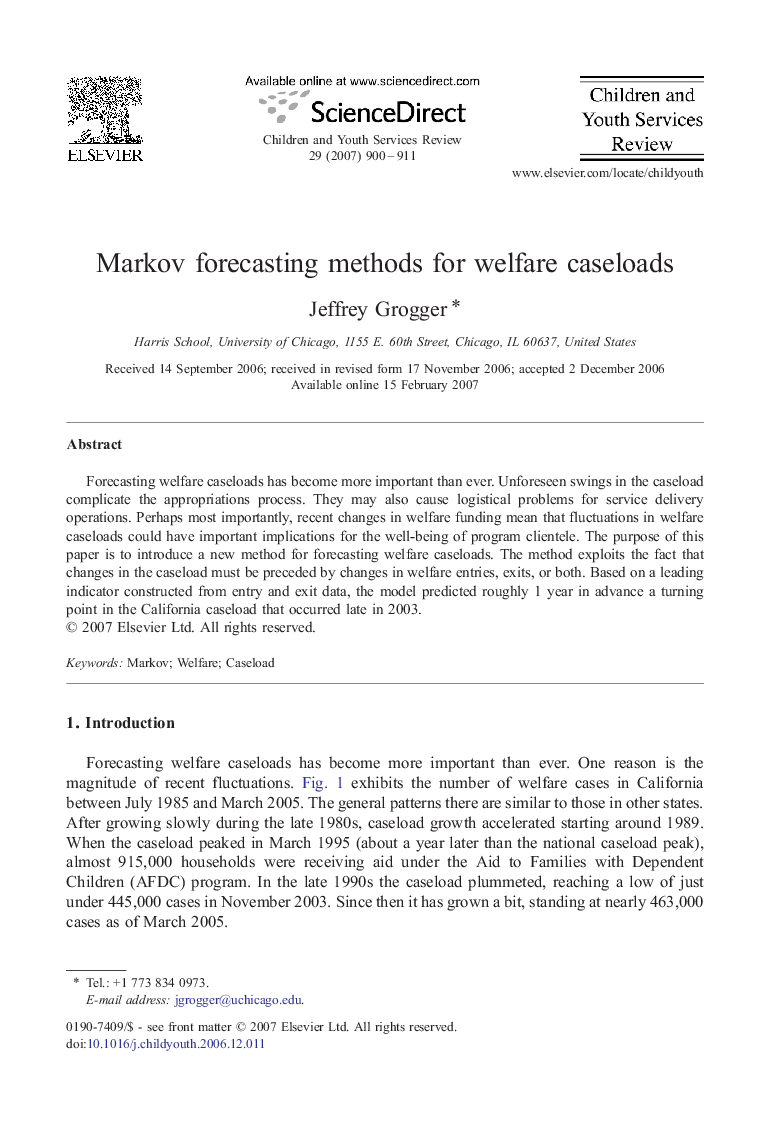| Article ID | Journal | Published Year | Pages | File Type |
|---|---|---|---|---|
| 347608 | Children and Youth Services Review | 2007 | 12 Pages |
Forecasting welfare caseloads has become more important than ever. Unforeseen swings in the caseload complicate the appropriations process. They may also cause logistical problems for service delivery operations. Perhaps most importantly, recent changes in welfare funding mean that fluctuations in welfare caseloads could have important implications for the well-being of program clientele. The purpose of this paper is to introduce a new method for forecasting welfare caseloads. The method exploits the fact that changes in the caseload must be preceded by changes in welfare entries, exits, or both. Based on a leading indicator constructed from entry and exit data, the model predicted roughly 1 year in advance a turning point in the California caseload that occurred late in 2003.
